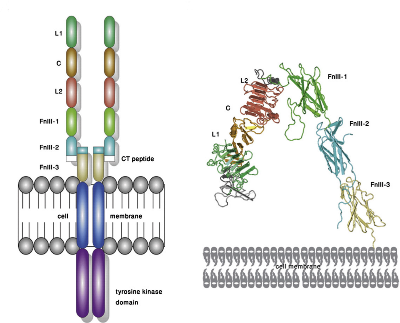Biochimica et Biophysica Acta (BBA) - Proteins and Proteomics , 2013, 1834 (10), 2170-2175
DOI: 10.1016/j.bbapap.2012.11.011
Recent studies of insulin receptor-related receptor (IRR) revealed its unusual property to activate upon extracellular application of mildly alkaline media, pH > 7.9. The activation of IRR with hydroxyl anion has typical features of ligand–receptor interaction; it is specific, dose-dependent, involves the IRR extracellular domain and is accompanied by a major conformational change. IRR is a member of the insulin receptor minifamily and has been long viewed as an orphan receptor tyrosine kinase since no peptide or protein agonist of IRR was found. In the evolution, IRR is highly conserved since its divergence from the insulin and insulin-like growth factor receptors in amphibia. The latter two cannot be activated by alkali. Another major difference between them is that unlike ubiquitously expressed insulin and insulin-like growth factor receptors, IRR is found in specific sets of cells of only some tissues, most of them being exposed to extracorporeal liquids of extreme pH. In particular, largest concentrations of IRR are in beta-intercalated cells of the kidneys. The primary physiological function of these cells is to excrete excessive alkali as bicarbonate into urine. When IRR is removed genetically, animals loose the property to excrete bicarbonate upon experimentally induced alkalosis. In this review, we will discuss the available in vitro and in vivo data that support the hypothesis of IRR role as a physiological alkali sensor that regulates acid–base balance. This article is part of a Special Issue entitled: Emerging recognition and activation mechanisms of receptor tyrosine kinases.

Petrenko A. G.; Zozulya S. A.; Deyev I. E.; Eladari D.
Biochimica et Biophysica Acta (BBA) - Proteins and Proteomics 2013, 1834 (10), 2170-2175
DOI: 10.1016/j.bbapap.2012.11.011
